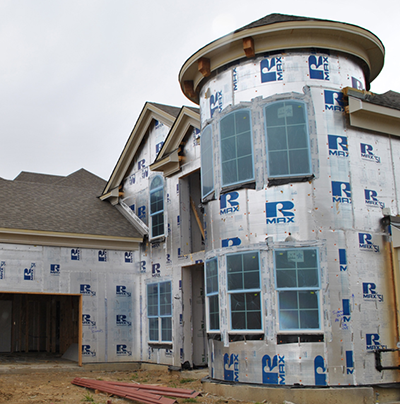
Windows can easily coexist with exterior continuous insulation of many thicknesses. With a whole building analysis, increasing the level of continuous insulation can allow for larger windows while maintaining the same level of overall building thermal performance. Modern detailing methods improve moisture management around fenestration openings.
Top Resources:
This presentation addresses two practices with proven ability to improve water penetration resistance of fenestration product installation: Sill pans and flashing for rough opening drainage, and air-sealing of the interior side of the rough opening gap.
Guidance for the use of thick foam (>1-1/2") in wood frame buildings
This guide from Building America addresses various means of applying foam sheathing on 2x4 wood framed walls in climate zones 3-5, including integration with other components (e.g., windows and cladding) for foam thicknesses up to 1-1/2”. It also addresses air barriers, water vapor retarders, and use of foam sheathing as a WRB or in combination with a separate membrane WRB.
"Dudley boxes" are robust window bucks that ease window installation, flashing, and integration with insulation in walls sheathed with exterior rigid foam.
DOE Building America report from 2005 on installing windows into walls with foam sheathing used as an integrated drainage plane
This blog article captures the successful historic practice of installing flanged windows directly over foam sheathing, but also recognizes the utility of enhanced details when large/heavy windows or thick foam is used.
Sometimes we make easy things hard. And sometimes we make hard things easy. With continuous insulation and punched opening both things are true.